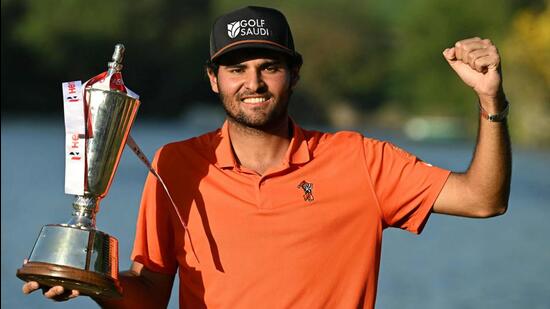:max_bytes(150000):strip_icc()/seve-1980-masters-5a8f0d7eff1b7800378a2bfc.jpg) Few tournaments in the world of golf evoke as much emotion and tradition as The Masters at Augusta National Golf Club. This tournament holds a special place in the Spanish golf legacy because of its prestige and the champions who’ve walked its fairways and donned the iconic Green Jacket.
Few tournaments in the world of golf evoke as much emotion and tradition as The Masters at Augusta National Golf Club. This tournament holds a special place in the Spanish golf legacy because of its prestige and the champions who’ve walked its fairways and donned the iconic Green Jacket.
It all began with Seve Ballesteros, who, in 1980, became the first European ever to win The Masters. Just 23 years old, Seve stunned the American crowd with his bold shot-making and unmatched charisma. He’d go on to win again in 1983, forever linking his name with Augusta’s legacy. His victory opened the gates for a new era of European contenders and a golden chapter for the Spanish golf legacy.
José María Olazábal followed in Seve’s footsteps, winning not once but twice, in 1994 and 1999. Quiet and precise, Olazábal was a master of Augusta’s undulating greens. His 1999 comeback win after a career-threatening injury remains one of the most emotional stories in Masters history. Many recall the embrace between him and his caddie at the 18th—pure magic.
The Unstoppable Spanish Golf Legacy
Then came Sergio García, whose dramatic playoff win in 2017 brought tears to the eyes of golf fans worldwide. After 73 attempts at majors without a win, Sergio broke through at Augusta on what would’ve been Seve’s 60th birthday. The tribute was unspoken but profound. That year, the Green Jacket was more than a trophy; it symbolised perseverance and destiny.
Jon Rahm‘s 2023 win was dominant (the last by a Spaniard) and remains a firm favourite this year. García will join him, still hungry and always dangerous at Augusta, Olazábal, playing both as past champions, and Jose Luis Ballester, who won the last U.S. Amateur.
Augusta is always full of surprises, and Spaniards again take centre stage. The Spanish golf legacy Seve started more than four decades ago is alive and well, and this week, all eyes will be on the azaleas—and García, Olazábal, Rahm and Ballester chasing history.
Photo: Live About.

 The Road from LIV to the DP World Tour
The Road from LIV to the DP World Tour